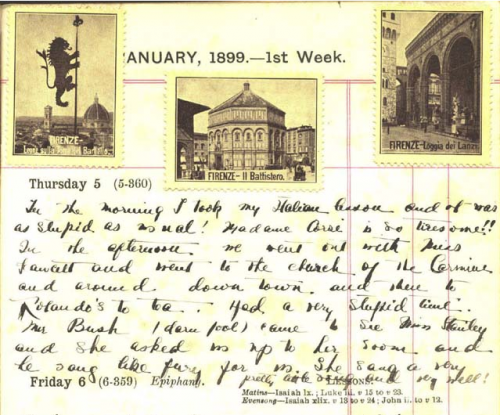This article is more than 5 years old.
Do you have a looming research paper that requires the use of primary sources? Are you interested in an approach that would reflect women’s personal thoughts on larger events and issues, or simply their daily lives, families, and circles of friends? In the past, it could be difficult to track down women’s personal writings, such as diaries and letters, since these documents were often buried in archival collections of the men whose wives, mothers, daughters, sisters, cousins, or aunts these women were.
One unique database, North American Women’s Letters and Diaries, does much to address such challenges. The database collection includes the full text of nearly three centuries of diaries and letters written by no fewer than 1325 women who lived in the U.S. or Canada ca. 1675-1949. The 150,000 pages of letters and diaries are drawn from both published and unpublished materials, and are augmented by additional biographical background information and annotated bibliographies of the sources used in the database.
The approaches to finding material are wide-ranging. One can browse by:
- Authors (e.g. entries by Louisa May Alcott)
- Sources (605 used in the database)
- Years (grouped by spans of years then individual years beginning with pre-1750)
- Location (regions of the U.S. and Canada, then by state/province and city)
- Historical Events (Battle of Bunker Hill yields 3 letters from Abigail Adams to John Adams)
- Personal Events (Childbirth, Pregnancy, Courtship, Death of a child, Death of a Spouse, Emigration, etc.)
Alternatively, one can search the database using a simple search where one can enter a search word or phrase, and then perhaps limit by year, author, or document type. A detailed advanced search mode provides an impressive array of factors to search by, permitting highly focused searching: age when writing, marital status, maternal status, age at first childbirth, number of marriages, number of children, nationality, race, religion, occupation, where written, year written, and historical or personal events.
Primary sources, broadly defined as contemporary, first-hand accounts, are as unique as the individuals who created them. Unlike secondary sources such as scholarly books and articles, primary materials are not wrapped in layers upon layers of accumulated years of retrospective interpretation and analysis, but are newly open to each reader’s responses. To be able to read the private writings of women who lived out their lives in distant times and places is a compelling opportunity, both for required academic coursework as well as personal interests in women’s history.


2 Comments on ‘North American Women’s Letters and Diaries’
This is a wonderful source -thanks for posting!
I love primary sources! This is amazing!
Thanks for getting us up to speed on this.